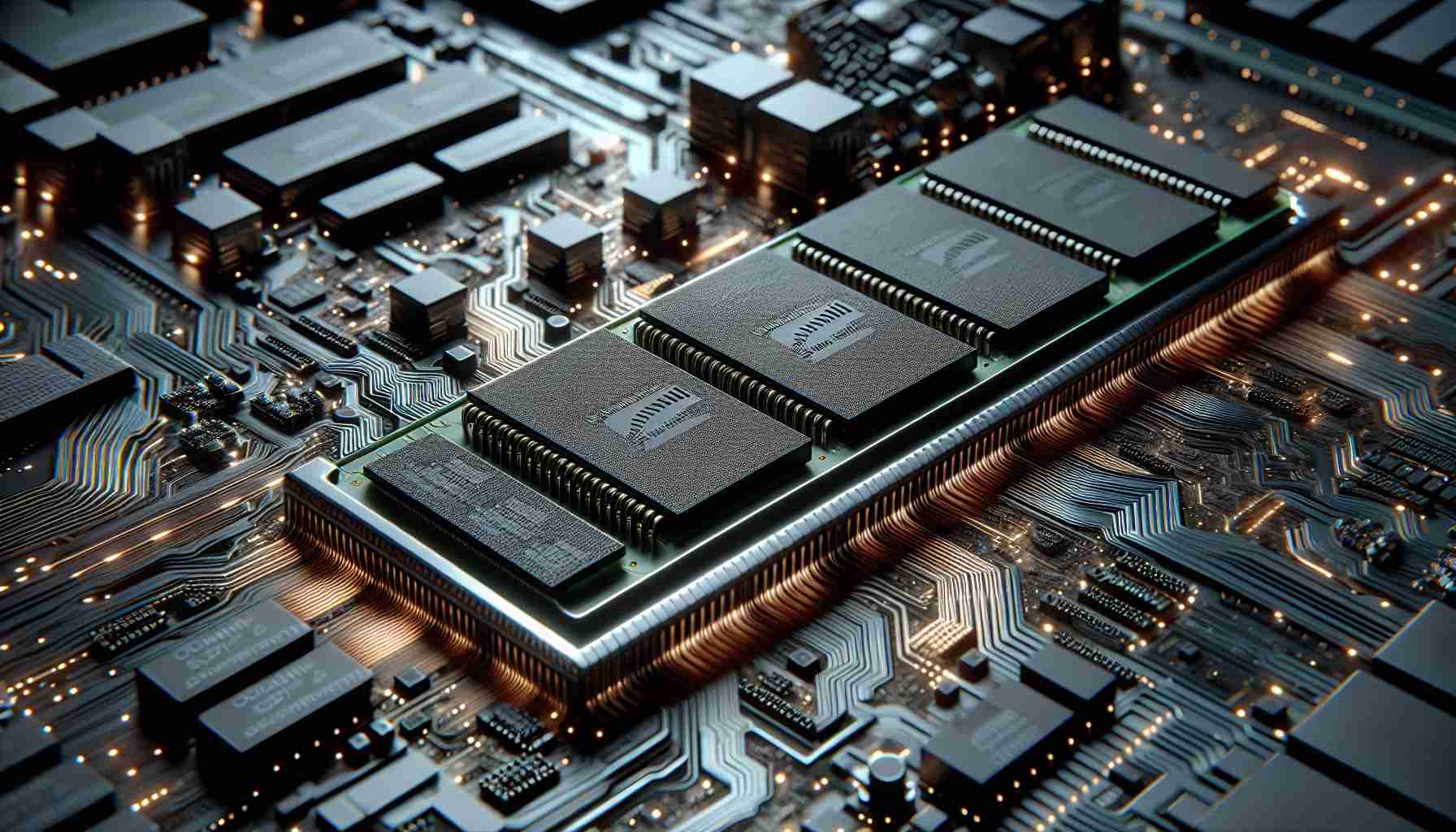- NVIDIA is collaborating with Samsung, SK hynix, and Micron to introduce SOCAMM memory modules, enhancing AI development.
- SOCAMM offers superior energy efficiency and increased I/O channels, radically improving data processing speed over traditional DRAM.
- With 694 channels, SOCAMM surpasses conventional DRAM and LPCAMM technologies, facilitating smoother AI-heavy performance.
- The innovation enables compact PC designs capable of handling demanding AI applications, marking a shift in future computer architecture.
- Mass production of SOCAMM may begin this year, positioning NVIDIA as a leader in the AI PC transformation.
- NVIDIA’s CEO presented a vision at CES 2025 for personal AI supercomputers, making advanced computing accessible to all users.
- NVIDIA’s strategy with SOCAMM signifies a broader move to democratize AI technology, reshaping our digital interactions.
Imagine a future where every laptop breathes AI, powered by memory that rockets computing speed while sipping energy like a diet soda. NVIDIA is barreling toward this vision. The company is quietly in talks with memory giants Samsung, SK hynix, and Micron to revolutionize AI development through the introduction of SOCAMM memory modules.
SOCAMM stands out, boasting superior energy efficiency and an increased number of I/O channels—a massive leap from current DRAM technology. Think of it as a turbo-charged highway for data, where bottlenecks are a relic of the past. With conventional DRAM using 260 channels and the upcoming LPCAMM aiming for 644, SOCAMM strides ahead with 694 channels, promising a swifter, smoother performance for AI-heavy tasks.
The significance of these fresh memory modules extends far beyond numbers. They mark a strategic shift in how future PCs are designed, enabling compact systems to handle the demanding workloads that AI applications require. By potentially commencing mass production this year, NVIDIA positions itself at the vanguard of the AI PC revolution.
At CES 2025, NVIDIA’s charismatic CEO, Jensen Huang, sketched a thrilling future with SOCAMM at its core—envisioning personal AI supercomputers accessible to everyone, from the everyday user to the tech-savvy engineer. This marks not just an upgrade but a metamorphosis in personal computing.
As these elements align, NVIDIA’s pursuit of SOCAMM symbolizes more than a technological upgrade; it’s a chess move in the grand game of democratizing AI capabilities, promising to reshape how we interact with our digital world. Get ready for PCs that think, adapt, and empower in ways we’ve only dreamed of.
Unleashing the Future: How SOCAMM Memory Transforms AI-Driven Laptops
How-To Steps & Life Hacks: Maximizing Your Laptop’s Potential with SOCAMM
1. Stay Informed: Monitor updates from NVIDIA and memory companies like Samsung and Micron to learn about SOCAMM availability.
2. Evaluate Upgrade Options: Check if your current laptop is compatible with SOCAMM once it’s released. If upgrading, ensure your system supports enhanced I/O channels.
3. Leverage AI Capabilities: Use advanced AI applications like machine learning models and sophisticated data analysis programs that benefit from SOCAMM’s speed.
4. Optimize Energy Use: With SOCAMM’s efficient energy consumption, adjust your laptop’s settings for enhanced battery life during AI-heavy tasks.
5. Regular Maintenance: Keep your memory modules clean and your laptop well-ventilated to maintain optimal performance.
Real-World Use Cases
AI Software Developers: Benefit from faster compile times and streamlined testing cycles with SOCAMM-enabled machines.
Data Scientists: Seamless handling of large datasets becomes possible, accelerating complex analyses.
Gamers and VR Enthusiasts: Experience smoother gameplay and enhanced virtual reality with decreased latency and faster load times.
Market Forecasts & Industry Trends
SOCAMM Market Growth: With global AI investment reaching $327.5 billion in 2022, the demand for advanced memory solutions is expected to surge. SOCAMM could capture a significant share of this market.
Industry Trends: As AI becomes ubiquitous, the trend shifts towards energy-efficient and high-performance computing solutions like SOCAMM, allowing for compact, power-saving AI platforms.
Reviews & Comparisons
Compared to DRAM: SOCAMM outperforms traditional DRAM with higher I/O channels (694 vs. 260), offering superior speed and efficiency.
Compared to LPCAMM: SOCAMM’s 694 channels outstrip LPCAMM’s 644, providing a noticeable performance boost in AI operations.
Controversies & Limitations
Compatibility Issues: The transition to SOCAMM may require hardware modifications, posing initial compatibility challenges.
Cost Implications: The advanced technology might come with higher upfront costs, posing a barrier for budget-conscious buyers.
Features, Specs & Pricing
Key Features:
– 694 I/O channels
– Enhanced energy efficiency
– Designed for AI-intensive workloads
Pricing Expectations: While initial pricing details are scarce, expect premium pricing due to cutting-edge technology.
Security & Sustainability
Data Security: Built-in architecture designed to secure AI-driven data processes against breaches.
Sustainability: Reduced energy draw compared to conventional memory, aligning with global sustainability goals.
Insights & Predictions
AI Revolution: SOCAMM could redefine personal computing, making AI supercomputers accessible, reshaping jobs, and driving innovation.
Technology Adoption: As AI integration becomes essential, SOCAMM’s efficiency and power will likely become industry standards by 2025.
Tutorials & Compatibility
Installation Guides: Manufacturers are expected to provide guides for easy integration of SOCAMM into laptops.
Compatibility FAQs: Ensure your system meets the technical criteria for SOCAMM installation.
Pros & Cons Overview
Pros:
– Superior speed and efficiency in AI tasks
– Energy-saving capabilities
– Increased data processing channels
Cons:
– Potential high cost
– Compatibility issues with existing hardware
Actionable Recommendations
– Upgrade Readiness: Assess your current hardware and prepare for potential upgrades to accommodate SOCAMM.
– AI Literacy: Educate yourself on AI applications to maximize the benefits of SOCAMM technology.
– Energy Management: Leverage SOCAMM’s efficiency for longer battery life and cost savings.
Explore more about NVIDIA’s groundbreaking innovations by visiting the official NVIDIA website. Embrace the AI revolution and prepare to unlock the full potential of SOCAMM-enhanced computers in the coming years.










